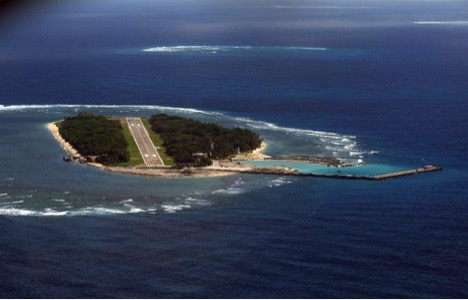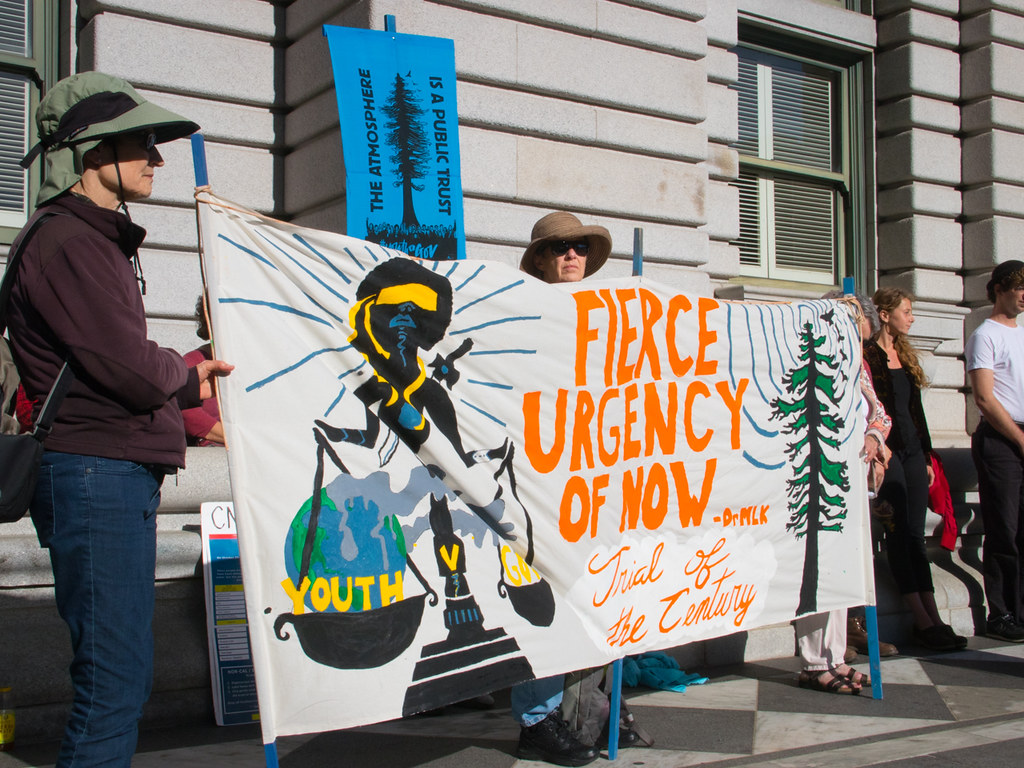Water Wars: Under the Sea
China and the Philippines plan to conduct talks and potentially sign an agreement regarding joint exploration for hydrocarbons, oil and natural gas in South China Sea. This agreement could cover portions of the South China Sea such as the Reed Bank that were under dispute in the 2016 South China Sea Arbitration.

Published by The Lawfare Institute
in Cooperation With

China and the Philippines plan to conduct talks and potentially sign an agreement regarding joint exploration for hydrocarbons, oil and natural gas in South China Sea. This agreement could cover portions of the South China Sea such as the Reed Bank that were under dispute in the 2016 South China Sea Arbitration.
Philippine Foreign Affairs Secretary Alan Peter Cayetano has said that the joint exploration project will not require the Philippines to set aside its claims to the disputed territory, but that he hopes to develop a framework for joint exploration that will allow the two countries to work together while otherwise maintaining its claims. The Philippines have proposed splitting the resources from the joint exploration project 60-40 (in the Philippines favor) with China.
However, critics of the joint exploration agreement have argued that it would legitimize China’s tactics of taking the South China Sea by military force and would amount to the Philippines giving up on their claim to the territories. Justice Antonio Carpio of the Philippine Supreme Court told the Wall Street Journal that “China is using the nine-dash line to bully us into giving up half of our resources.”
These planned talks are occurring despite the fact that Philippine President Rodrigo Duterte has recently taken a harder line against China. Duterte has warned China against unilaterally exploring for oil and other resources in the area claimed by the Philippines, but according to presidential spokesman Harry Roque “What we’re discussing is joint exploration, and he warned against unilateral exploration.”
Chinese Foreign Minister Wang Yi’s visit to the Philippines to discuss the joint exploration project was originally scheduled for Sept. 16 to 18, but has been rescheduled due to Typhoon Ompong.
In Other News …
In the South China Sea
Japan has acknowledged the deployment of a submarine to the South China Sea to participate in military drills between Aug. 26 and Oct. 30, the first time it has openly announced the deployment of a submarine to the disputed region. The submarine, the Kuroshio, conducted antisubmarine warfare exercises along with a helicopter carrier and a pair of destroyers on or about Sept. 13.
Japanese Prime Minister Shinzo Abe downplayed the significance of this acknowledgement, telling reporters on Sept. 17 that the military drills were not conducted with any specific country in mind, that Japan has conducted such drills in the past, and that his country’s relationship with China was improving.
China’s response was also measured, with Foreign Ministry Spokesman Geng Shuang saying that “non-regional countries” should respect efforts to “peacefully resolve the South China Sea issue” and “refrain from doing anything that will undermine regional peace and stability.”
The deployment comes in the context of a somewhat warming relationship between the two powers, tempered by Japan’s recognition of China’s growing military ambitions. Several experts told the New York Times that Tokyo’s announcement is meant to send a message to China that Japan will continue to stand up for itself. “We are sending a signal that China cannot just do whatever it wants to do and get away with it,” said Narushige Michishita, director of the Security and International Studies Program at the National Graduate Institute for Policy Studies in Tokyo, to the Times.
Toshiuki Ito, a retired rear admiral and now professor at Kanazawa Institute of Technology, described Japan’s diplomatic tactic as “shaking with its right hand while holding up a fist with its left.”
Following the exercises, the Kuroshio also visited the Vietnamese port of Cam Ranh, the first time a Japanese submarine has visited the country. This visit seems to be part of a larger initiative by Japan and Vietnam to improve their bilateral relationship, an initiative that may be partially aimed at counterbalancing against China.
In India
On Sept. 5, Indian Minister of Defense Nirmala Sitharaman and U.S. Defense Secretary James Mattis announced the signing of a new “Communications Compatibility and Security Agreement” between the two countries, which will allow India to buy new defense technologies from the U.S. and access secure communications systems. Before the signing of this agreement, American weapons systems sold to India could not include these secure communications.
The agreement will allow the two states’ militaries to conduct joint operations more effectively by improving their ability to conduct secure communications, and will also allow the Indian military to communicate with other countries that have signed similar agreements with the United States.
The agreement was the result of the week-long “2+2 Dialogue” between the two countries’ diplomatic and military chiefs in New Delhi. Other key announcements from the meeting include both sides agreeing to speed India’s entry into the Nuclear Suppliers Group, and the announcement of enhanced defense cooperation such as joint military exercises in 2019 and the establishment of a direct hotline between India and the U.S.
One area where the two sides did not reach agreement was on India’s planned purchase of five S-400 surface-to-air missiles from Russia. The United States opposes the deal due to its sanctions against Russia and has declined to grant India a waiver for the purchase, but discussions on the missile systems continue between the parties.
In Malaysia
The government of Malaysia has cancelled three pipeline projects backed by China with a value of approximately $4.1 billion. Malaysian Prime Minister Mohamad Mahathir, whose electoral victory this May ended six decades of rule by the Barisan National political coalition, has instituted a review of contracts between the two governments after suspending construction on the pipelines in July.
The cancelled projects consist of two oil and gas pipelines in mainland Malaysia and the island of Borneo, and a pipeline linking the state of Malacca to a refinery and petrochemical plant in the state of Johor.
The decision to cancel these contracts was in part motivated by a desire to cut government debt in response to findings that the previous government of former Prime Minister Najib Razak was underreporting the state’s debt. Razak was arrested and charged soon after the election for his role in the 1Malaysia Development Board, or“1MDB,” scandal, in which Razak and other officials were alleged to have diverted state funds to pay for their luxury lifestyles. He was again arrested on further abuse of power charges this month. Some of the government’s liabilities are the result of this theft of state funds.
But part of Mahathir’s motivation also seems to be to reduce Malaysia’s dependence on China. During a visit to China in August to sign new trade agreements, Mahathir warned against the potential for a “new version of colonialism” focused on unfair trade treaties. While campaigning for office, Mahathir had criticized Chinese investment in Malaysia, and had first made the promise to review the contracts.
The East Coast Rail Link, a planned route that would connect the east and west coasts of Malaysia, and which at $20 billion represents the largest Chinese investment in Malaysia, was also suspended in July, and remains under review.
Analysis and Commentary
In the Wall Street Journal, Rob Taylor and Rachel Pannett discuss how recent U.S. Marine deployments to Guadalcanal, the site of one of their most famous battles of World War II, reflect America’s changing strategies to counteract Chinese influence in the Pacific. The U.S. Marines joined a fleet of Australian vessels including Australia’s largest warship, the HMAS Adelaide, which were touring Pacific Islands en route to military exercises in Hawaii.
In the South China Morning Post, Richard Heydarian analyzes changes in Philippine President Duterte’s attitude towards China and the United States. Noting that Duterte seems to be increasingly weary of his role, Heydarian cites his tougher language against China and his warming relationships with the United States as evidence that he is embracing a more “sober-minded and sensible foreign policy.”
And in the New York Times, Hannah Beech relates what she saw while accompanying a U.S. naval aircraft as it patrolled in the South China Sea, including warnings from China that it was violating Chinese airspace. In doing so, Beech also details a history of the conflict in the South China Sea; he also cites analysis from U.S. military leaders that China now controls the region “in all scenarios short of war.”





